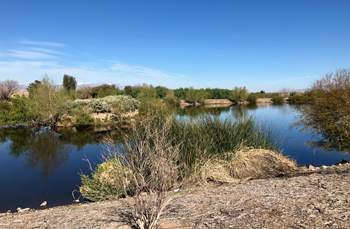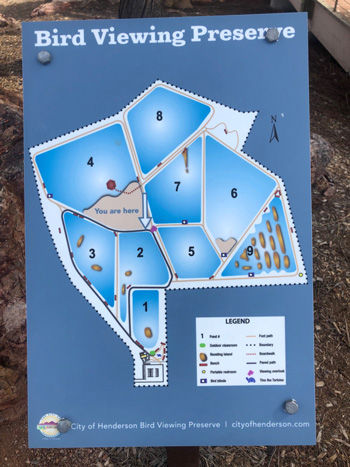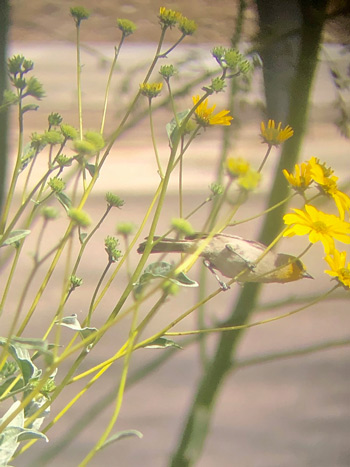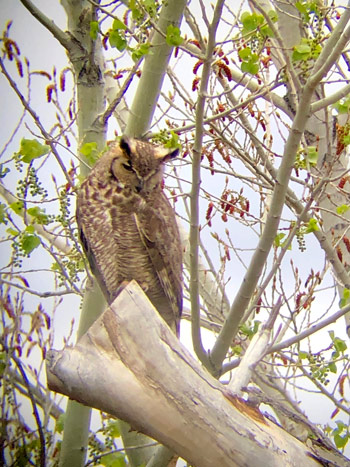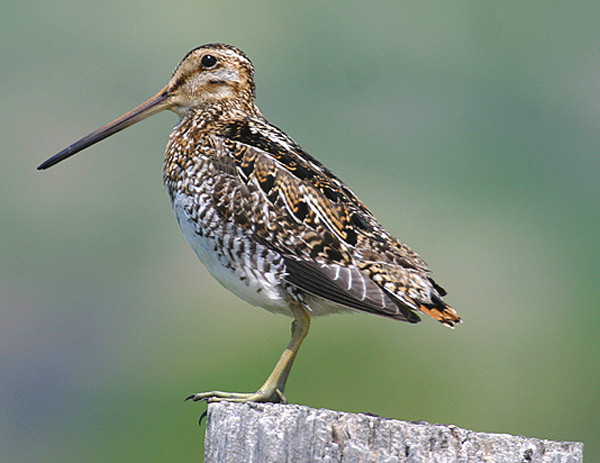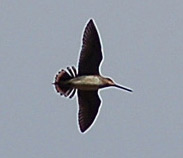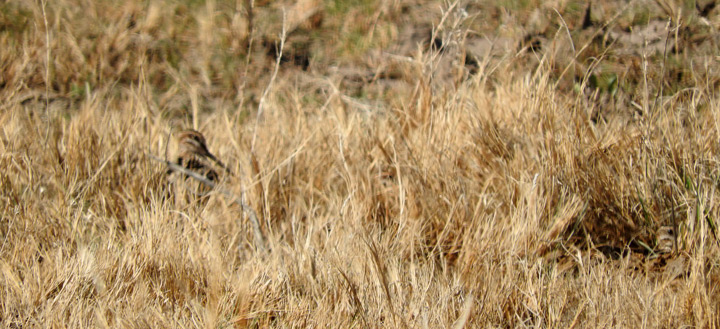Utah County Birders
Newsletter
|
||||||||||||||||||||||||||||||||||||||||||||
 |
Contents
Monthly Meeting
Upcoming Field Trips
Captain's Log
Bird of the Month
Field Trip Reports
Printable Version
Thrusday April 11th, 2019 at 7:00 PM - at the Monte L. Bean Museum. Map to Museum
Our presentation will be: Birding Adventures in Ethiopia by Robert Parsons.
April 19-20 (Friday & Saturday) - Birding Fish Springs lead by Keeli Marvel
We will be birding Fish Springs National Wildlife Refuge on April 20th. There are still a few spots left to spend the night of the 19th in bunkhouse, so text me at 801-602-9566 to reserve a spot if you're interested. Those spending the night will meet at 4pm on the 19th in the Northwest corner of Walmart in Saratoga Springs (by the Chase Bank). Everyone joining us the next morning will meet in the parking lot in front of the Fish Springs main office around 7:30am on the 20th. It’s a 2.5 hour drive out there on dirt roads for half of the way, so if you plan on driving, a vehicle with good ground clearance, good tires, and a spare tire is highly recommended.
Fish Springs has been known to be a good migrant trap and is also a pretty reliable place to see/hear bitterns, snowy plover, and lots of waterfowl.May 13th - Utah County Hot Spots trip for the club to prepare for the festival trip if anyone wants to go. It will be on May 13th 7-3. meet at Walmart parking lot NE Corner.
Friday, May 31st and Saturday, June 1st - WASHINGTON COUNTY
Lead by Suzi Holt. You will need your own accommodations.
We will meet at the McDonald's on Bluff Street Friday morning at 6 am to head out to Lytle Ranch. Bring a lunch. On the way back we will stop by Utah Hill to look for the Black-chinned Sparrow, then look for a Bell's Vireo and Common Blackhawk along the Sanra Clara River. We may go to Snow Canyon, Tonaquint Nature Park, Brooks Narure Park and Boits/Cox Park if time permits.
Saturday we will start out looking for Inca Doves in Hurticane, then head to Kolob Terrace. Meet at 7 am at the Wal-Mart in Hurricane in the SW corner of the parking lot. It is located east of the Sand Hollow turn off, along Hwy 9, 180 N 3400 W Hurricane
Utah County Birders
Captain’s Log - April 2019
by Keeli Marvel
Welcome to Spring!
|
Greetings fellow birders! Welcome to spring!
Migration is about to be upon us and I don’t know about you but I’m
ready for some spring birds. |
|
|
I just spent the last week
with a birder from New York named Lisa trying to help her pick up some
western lifers. We started in Nevada with a visit to the Henderson
wetland center. There the highlights Included both ANNA’S and COSTA’S
HUMMINGBIRDS, lots of ducks, WILSON SNIPE, COMMON GALLINULE, GAMBEL’s
QUAIL, BLACK PHOEBES, BLACK-TAILED GNATCATCHERS, VERDIN, and
ORANGE-CROWNED WARBLERS. It’s also a place to potentially get LEAST
BITTERNS, although we didn’t see any. |
|
|
|
|
| From there we chased a HOODED ORIOLE sighting in a Henderson neighborhood without any luck. We also tried to get up into Red Rock Conservation Area where I had seen a PRAIRIE FALCON and WHITE-THROATED SWIFTS the day before, but it was a Saturday during spring break and they were over capacity and turning people away, so we headed up in the old highway toward the Beaver Dam wash instead. We got WHITE-THROATED SWIFTS, a SAY’S PHOEBE, AND A BLACK-THROATED SPARROW at the cliffs by the turnoff to Lytle Ranch. We tried for BLACK-CHINNED SPARROW on Utah Hill without any luck, and headed in to St. George where a walk around Tonaquint Park produced 4 NEOTROPIC CORMORANTS, a nesting GREAT-HORNED OWL, ABERT’S TOWHEES, and a bunch of WOOD DUCKS and RING-NECKED DUCKS on the pond. The next day we got up early and hit Quail Creek Reservoir looking for VIOLET-GREEN SWALLOWS, but only found NORTHERN ROUGH-WINGED SWALLOWS. We also found ROCK WREN, CANYON WREN, and a plethora of RUDDY DUCKS on the lake. We cruised out to Lytle where highlights included the PHAINOPEPLAS, a pair of GOLDEN EAGLES, COSTA’S HUMMINGBIRDS, a SAVANNAH SPARROW, LADDER-BACKED WOODPECKER, and tons of singing LUCY’S WARBLERS. We tried again for the BLACK-CHINNED SPARROW at Utah Hill without any luck, but eventually located one in Snow Canyon State Park at the equestrian trailhead near the dunes that afternoon. We rounded out that day with a couple stops- the first at Sand Hollow Reservoir where the only new birds we picked up were CLARK’S and WESTERN GREBES and a BONAPARTE’S GULL. We finished up as the sun was setting getting my friend a lifer VIOLET-GREEN SWALLOW at Grandpa’s Pond in Hurricane. Our last day in Southern Utah we cruised into Zion first thing in the morning. We hiked the Watchman Trail and heard CANYON WRENS calling and saw some BUSHTITS. Between the visitor center and the river we got a HOUSE WREN and a fantastic side-by-side comparison of DOWNY and HAIRY WOODPECKERS. We mostly struck out on all of our actual target birds (Broad-tailed hummers, more violet-green swallows, and condors) except for hearing a potential broad-tailed hummer in a housing area with hummingbird feeders just off the Tanner Ampitheater Road in Springdale. That ended our Southern Utah portion of the trip, and we ended up getting Lisa two lifers and several good looks at birds she’s only seen once or twice before. It seems that it was a little early for the majority of migrants but we are right on the cusp of migration, and things are going to start booming here any day. In other news, I saw my FOY Turkey Vultures in Southern Utah and the American Avocets and American White Pelicans are back at Powell Lake! Spring is finally here! Happy Birding, Keeli Marvel |
|
Wilson’s Snipe
Galligano delicata (galligano)
Named after Scottish Naturalist and Ornithologist, Alexander Wilson, first to
describe this species, especially the tail retrices.
by Steve Van Winkle Wilson’s is a early migrant to the north, ours most likely wintering in southern Arizona, and possibly Mexico and as far south as Central America. Interestingly, Wilson’s has been recorded every month throughout the year in Utah Co., (ebirds, Cornell Lab of Ornithology). The species often arriving before the last snows reluctantly give way to spring, as observed during our Utah County Birders “Waterfowl and Raptor” field trip in March. *Noting that species has been recorded throughout the entire year! Our "covey” of observers recorded 18 snipes flittering, individually and in small groups, on the snow-mud covered Salem March. Most likely probing the exposed soil for earthworms, insects and plant materials (a mainstay of their diet).
During the summer of ’72, I had the pleasure of first observing “the wisp of snipe, the will-o-the-wisps {ghost light at night in the bogs and marshes from English Folklore}, of the wetland meadows and marshes” and the courtship display on the wing “a rapidly pulsating series of notes, who, who, who, who, who”, A.C. Benson, 1927., {also described as a winnowing of the wings, as the male circles high and then dives downward in a territorial and courtship display}, at Hagerman, Idaho. There, I worked as a fisheries bio-tech with Idaho Fish and Game. Winnowing is a rush, stir or fan of air through the wing in flight, although in the case of our Wilson’s snipe this curious song flight described by W.L. Dawson, {1923} is actually “produced by the impact of the air upon the lateral feathers (retrices) of the tail, held stiffly, at right angles to the body”, as the snipe dives down from great heights during its courtship display. As I rambled about at Hagerman Fish Hatchery property and Silver Creek reserve no nests were ever found. A.C. Bent only found one nest during his entire life of birding and writing field notes on his find states “It was found on high ground…upon a little clump of grass…beneath a barberry shrub on the edge of a boggy arm of the marsh…with the 4 eggs that blended perfectly with their surroundings.” The snipe is perfectly suited for these varied habitats of its niche by a combination of disruptive and concealing camouflage created by the wonderfully adaptive cryptic patterns of its body feathers. “Relying on this cryptic coloration and wetland vegetation, Wilson’s Snipes typically crouch and freeze when danger is perceived.” Corman, Troy E.. 2005. A scene we and I have repeatedly witnessed while “glassing” for this intriguingly deceptive bird.
An interesting side-bar is the military sniper get his or her name from the snipe, largely due to their inability to be shot by all but the most accurate hunters, hence sharp-shooters. Despite their small size and “fleet of wing” Bent expresses concern about heir dwindling numbers during the later-half and first-half of the 19th and 20thcenturies due to excessive hunting pressure. However, the current population is not considered threatened and as of 2014 is not listed on the State of the Birds Watch List. World wide population is estimated at 2 million individuals. After our discussion, at the last chapter meeting regarding establishing a member’s library of bird books that can be shared, I remembered a well established ornithologist, Arthur Cleveland Bent, and his “Life Histories of North American Shore Birds” {publ. 1927}. Included is a wonderfully accurate accounting of the Common Snipe, Galligano galligano (Wilson’s, G.delicata) its courtship, migration and behavior. Bent’s Life Histories are an invaluable research source for any birding enthusiast. See: birdsbybent.com for the complete collection of life histories accessible on-line for immediate reference. References: Arizona Breeding Bird Atlas, Gorman, Tom E., 2005: Life Histories of North American Marsh Birds, Bent, Arthur Cleveland ,1927; The Sibley Guide to Birds, Sibley, David Allen, 2000. |
||||
|
|
||||
|
|
||||
|
Waterfowl and
Raptors!!! |
||||
|
Seven Birders showed up on a snowy, rainy, sleety day for some good car birding. Ducks are going to stay put right? Well Spring Lake was a bust with only a American Wigeon and Pond ducks, a DC cormorant. But we did see a beautiful Merlin. Too bad it was so gloomy for photos. On the way to Salem Pond we saw 5 American Kestrals. Salem Pond was terrible too! There was one Lesser Scaup, a few Common Goldeneye, the Pond Ducks and a couple Canada Geese. But the Muskrat was obliging. On to Salem Fields. We found a bunch of Ring-necked ducks, some more Lesser Scaup and a few Gadwall, but the bonus was 18 Wilson's Snipes flying around together in the field!! Also there were a few more Canada Geese, Mallards, a couple Killdeer and two Bald Eagle. At the North Salem Fields we saw Red-tailed Hawk, Cinnamon Teal, a lone Northern Pintail, a bunch more Ring-necked Ducks and 4 Northern Shovelers and a Flicker. On the way to Benjamin Slough we saw Western Meadowlarks, Brewer's and Red-winged Blackbirds and a few more American Kestrals. |
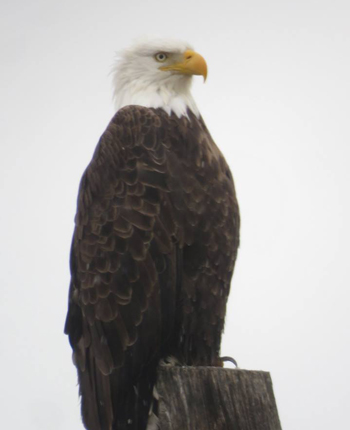 Bald Eagle - Utah Lake |
|||
|
At the slough we found Green-winged and Cinnamon Teal, a huge group of Redheads, 3 Buffleheads, Northern Shovelers and lots more Northern Pintails and Geese. We decided to go around West Mountain to from Lincoln Beach to Lebarron Point. We found 3 more Bald Eagles, 9 Great Blue Herons and some more Northern Pintails, American Coots and Gadwall. In Genola/Goshen Fields we saw more Red-tailed Hawks, Canada Geese, Northern Pintails, American Wigeons. Cinnamon Teal and Mallards. Overall a great day for ducks and a few Raptors. Thanks to all who braved the storm! |
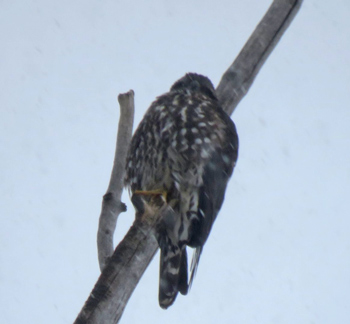 Merlin -Spring Lake |
|||
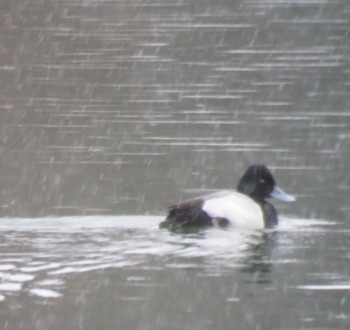 Lesser Scaup-Salem Pond |
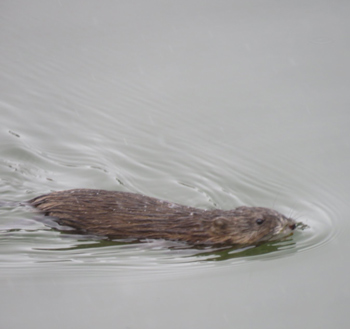 Muskrat-Salem Pond |
|||
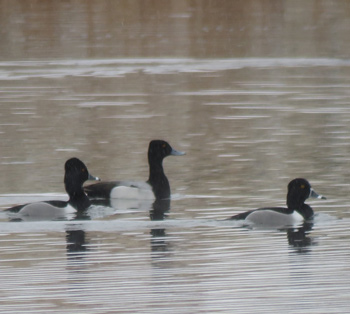 Lesser Scaup & Ring-necked Ducks-Salem Marshes |
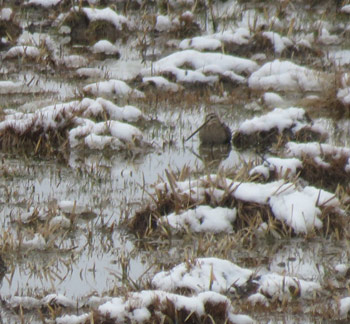 one of the Wilson's Snipe-Salem Marshes |
|||
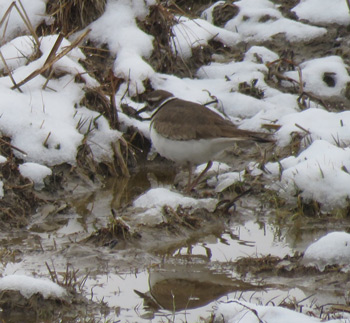 Killdeer-Salem Marshes |
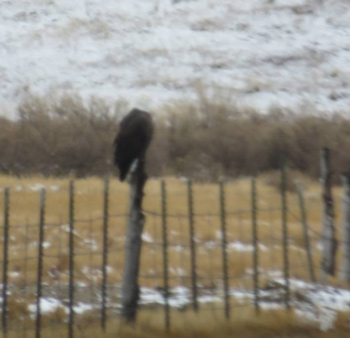 Bald Eagle-Salem Marshes |
|||
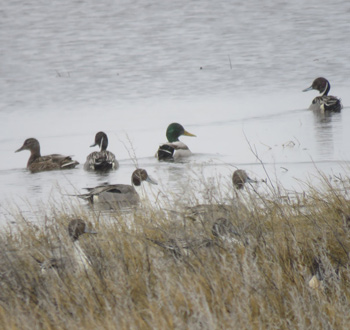 Mallards & Northern Pintail-Benjamin Slough |
 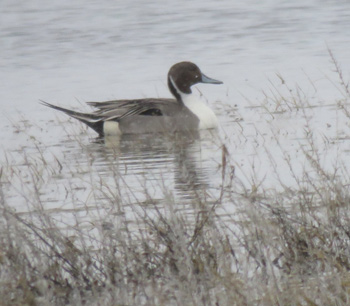 Northern Pintail-Benjamin Slough |
|||
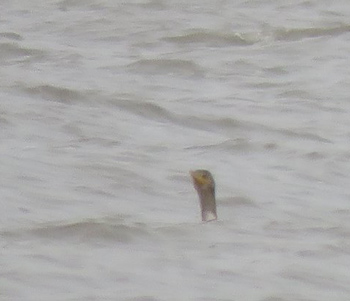 Double-crested Cormorant |
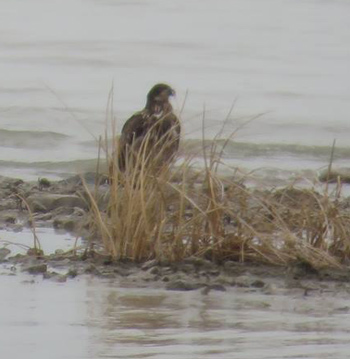 Juv. Bald Eagle- Utah Lake |
|||
